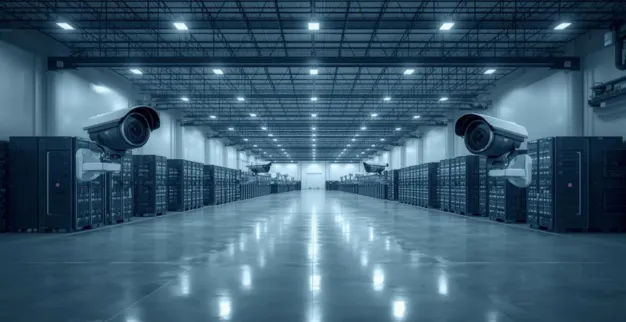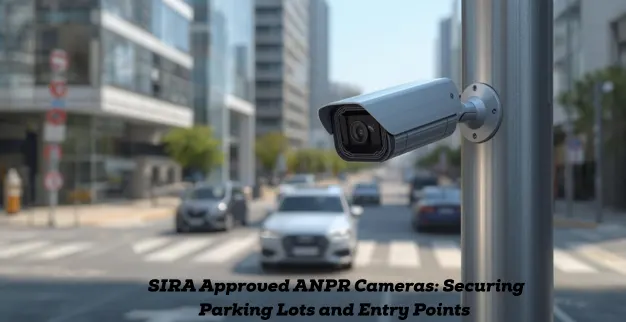Top Benefits of Using SIRA Approved Cameras for Large-Scale Facilities
By: Ganesan D
03 Oct 2025
Category: CCTV security
Introduction
In large-scale facilities such as campuses, industrial complexes, airports, hospitals, data centers, and multi-tower developments, security demands are high. Installing SIRA approved cameras isn’t just a compliance checkbox — it’s a strategic choice that delivers on reliability, legal protection, operational efficiency, and deterrence. In this article, we dig into the top benefits of using SIRA approved cameras in large facilities, and how they help future-proof your surveillance system.
What Does “SIRA Approved Camera” Mean?
Before we dive into benefits, a quick primer:
SIRA stands for the Security Industry Regulatory Agency, particularly active in Dubai / UAE, which mandates strict technical, procedural, and legal standards for security systems.
SIRA approved CCTV / SIRA certified cameras are those that comply with those standards — in image quality, encryption, data retention, installation practices, auditing, and documentation.
Using non-approved CCTV in regulated zones can lead to fines, failed inspections, reinstallation, or non-acceptance of footage as evidence.
Because large facilities often span many zones, have multiple stakeholders, and face higher regulatory scrutiny, SIRA compliance becomes a crucial baseline.
Top Benefits of Using SIRA Approved Cameras in Large Facilities
1. Regulatory Compliance & Legal Assurance
One of the clearest advantages: with SIRA approved cameras, your facility is aligned with local laws and regulatory frameworks. That means:
- Avoidance of penalties, fines, or orders to remove non-compliant systems.
- Assurance that video footage is admissible in legal or regulatory proceedings.
- Faster approvals during audits, licensing, or inspections, especially when authorities demand proof of compliance.
For large facilities dealing with multiple regulatory bodies (safety, security, municipal, insurance), this legal assurance becomes a major risk mitigator.
2. High Image Quality & Technical Standards
SIRA standards often mandate minimum resolutions, frame rates, color fidelity, encryption, dynamic range, and low-light performance.
For large facilities that have long sightlines, distant fields, or wide perimeters, better image quality means:
- Clearer identification of persons, vehicles, faces, license plates
- Reduced blind spots or low-quality zones
- Higher efficacy of analytics (motion detection, object tracking)
3. Uniform Standards & Scalability
Large facilities often evolve over time: new wings, expansions, satellite areas, or extra floors. Using SIRA approved systems ensures that all new additions maintain the same technical baseline. Some advantages:
- Consistency in camera models, specs, and management methodologies
- Easier integration across zones
- Predictable maintenance, spares, and lifecycle planning
- Smooth interoperability across all CCTV modules
4. Stronger Evidence & Audit Trail Integrity
For any incident — theft, intrusion, dispute — the quality and integrity of video footage can become critical. With SIRA approved cameras:
- You can maintain tamper-evident logs, secure encryption, and audit trails
- The chain of custody is better preserved, giving you stronger evidentiary value
- Inspectors or courts are more likely to accept footage as valid due to compliance-certified systems
5. Better Maintenance, Support & Reliability
SIRA regulation often requires scheduled maintenance, performance checks, and documentation. Using certified vendors ensures you get:
- Periodic maintenance, calibration, and inspections
- Warranty support that meets regulatory expectations
- Proactive monitoring and failure alerts
- Consistency in spare parts and module replacement
6. Reduced Resistance from Stakeholders & Tenants
In large facilities with multiple tenants, departments, or stakeholder groups (e.g., in a business park, mixed-use complex, hospital + research sections), having an approved, auditable, legally acceptable CCTV system builds confidence. Key benefits:
- Tenants feel safer and assured
- Management can show compliance to insurers, regulators, and visitors
- Reduced friction in permissions — e.g. when new tenants ask if CCTV is compliant
- It projects professionalism and trust.
7. Future-Readiness & Upgradability
Regulations evolve. SIRA may update or enhance its standards over time. If your system is already within the approved realm:
- Upgrades or retrofits will likely be easier
- Your system is more likely to support advanced features (analytics, video management, encryption)
- You avoid having to rip and replace entire systems when compliance changes
Example Use Cases in Large Facilities
- Industrial Complex / Manufacturing Plant: Wide production areas, heavy machinery, long corridors — SIRA approved cameras can cover large spans with clarity, assist in safety monitoring, and integrate with access control.
- University / Campus: Multiple buildings, open grounds, dorms, sports fields — uniform SIRA systems ease central monitoring and ensure compliance across diverse zones.
- Airport / Transportation Hub: High security, high throughput — only certified CCTV systems meet the stringent evidence and regulatory standards.
- Healthcare / Hospital Campus: Sensitive zones (ICU, labs), visitor areas, parking — SIRA compliance helps in legal, privacy, and operational standards.
- Mixed-Use Commercial / Retail Complex: Shopping zones, parking, office towers — consistent SIRA CCTV ensures unified coverage, auditability, and tenant assurance.
Challenges & Things to Watch Out For
| Challenge |
Mitigation / Best Practice |
| Upfront cost |
The investment is higher, but ROI comes via compliance, avoided fines, and better security value |
| Integrating legacy cameras |
You may have to migrate or phase out non-compliant devices rather than mix standards |
| Time synchronization & logs |
Ensure all cameras, recorders, network devices, and time servers are synchronized (e.g. via NTP) |
| Scalability & bandwidth |
Large numbers of high-res streams will strain network; plan for compression, hierarchy, and edge solutions |
| Privacy & regulations |
Even if cameras are SIRA approved, you must still comply with privacy laws (blurring, zoning, consent) |
| Vendor lock-in |
Choose vendors that support open standards so future integrations / replacements are easier |
Conclusion
For large-scale facilities, choosing SIRA approved cameras is not just a regulatory formality — it’s a strategic investment. You gain legal assurance, better image quality, uniform standards, robust audit trails, reliable maintenance, stakeholder confidence, and future readiness. While costs and integration complexity may rise, the value delivered — especially in risk mitigation and compliance — typically justifies it.



